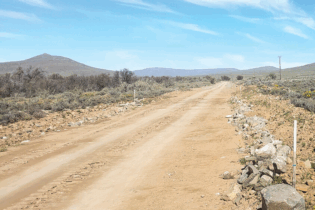The assumptions, the funding, the efficiencies, the current build programme and the next generation of build required. Paul O’Flaherty, a South African Chartered Accountant [CA(SA)] with extensive local and international experience was appointed Finance Director of Eskom on the 1st January 2010. Part of his responsibility is to manage the funding plan for the organisation’s build programme. He discusses the implications of the recent re-rating of South Africa and of Eskom itself by the rating agencies, and the trade-offs the nation faces between securing affordable funding and ensuring that electricity remains an affordable tool for the transformation of the country.
“Medupi is currently the largest single-infrastructure project South Africa has ever undertaken, at more than four times the value of the Gautrain project. It is part of Eskom’s massive R340 billion new build programme which began in 2005 and which, by the time it is completed in 2019, will have boosted South Africa’s power generating capacity by more than a quarter. It will enable higher rates of economic growth, investment and job creation. Already, the new build projects have had significant spinoffs in terms of creating skills and jobs, stimulating the development of local supplier industries and boosting the economies of the communities in which they are situated. The question, though, is how do we pay for these projects? A big part of the answer is that we need financially healthy entities which can do so. The power stations we are building now will be generating power for the next 50 years, and possibly even beyond that. It makes sense to fund them with long term debt that can be repaid over the life of those assets. But to support that debt, we need an Eskom which is financially sustainable. In essence, what that means is we need to ensure that we do not leave behind a financial mess which future generations will have to clean up (namely, debt you can’t afford to service and ultimately repay). Eskom already had R182 billion of gross debt on its balance sheet at end-March 2012. That will increase over the next three years, to over R300 billion, as we ramp up the spending on our new build programme. Almost 60% of the debt we currently have on the balance sheet matures in more than ten years’ time; the last of it will have to be paid back in the year 2042. Eskom has been able to secure more than 78% of the R300 billion funding it needs to complete the build programme, but it needs to borrow on local and international markets at competitive rates. So it is critical that Eskom will be able to generate the cash required to pay the interest on the debt and repay the capital in the long term, but also that it is in a position to service the debt in the near term. Interest payments over the next five years will average about R23.5 billion a year – cumulatively over the five years our interest payments are the equivalent of one whole current year’s revenue. Eskom will need strong cash flows to ensure it can service the interest and ultimately the debt itself. It will also be crucial that the cost of new and existing debt (i.e.: the interest rate to be paid and the cost of forward cover to hedge foreign debt), be kept as affordable as possible. The cost of the debt will depend to a significant extent on the ratings international credit rating agencies including Moody’s and Standard and Poor’s give Eskom.If Eskom were currently to be rated on a stand-alone basis – that is, simply on its own financial merits – its rating would be well below investment grade (a B on the Standard and Poor’s scale, or Ba3 on the Moody’s scale). Eskom’s investment grade rating is currently very dependent on the support it has from its shareholder, the government, mainly in the form of a R350 billion guarantee facility. As was announced on 1 October 2012, Moody’s downgraded Eskom’s credit rating by one notch to Baa3 (just above sub-investment grade) in line with the downgrading of South Africa the previous week.
Eskom believes it is important to ultimately move towards a stand-alone investment grade rating to reduce the burden on the country’s rating. To get there, we must as a country ultimately move towards cost-reflective tariffs, which cover not only the full operating costs of keeping the lights on but also the capital costs, enabling Eskom to service debt and ultimately equity. All of this puts into context the R13.2 billion in net profit which Eskom reported for the financial year to end-March 2012, up from R12.4 billion in the previous year. This is the third year in which Eskom has recorded a profit, after it made a loss of R9.7 billion in financial 2009; it all goes back into the business, as the shareholder (Government) has waived all dividends for the period of the capacity expansion programme, to finance the new build programme and service debt. The annual results for 2012 clearly demonstrate that Eskom has put the building blocks in place to enable it to become financially sustainable, as well as operationally efficient. But there is some way to go still, and the future price path for electricity will be crucial in ensuring a migration towards financial sustainability. Timing is the question. As the President indicated in his State of the Nation address, South Africa needs an electricity price path which supports economic growth and job creation and protects the poor, but at the same time ensures a financially viable and sustainable Eskom and electricity industry. Finding the fine balance between those imperatives is the challenge.” About the author: Paul O’Flaherty CA(SA) is the Finance Director and Group Executive: Group Capital at Eskom. This article is an abbreviation of a speech he gave at the South African Institute of Chartered Accountants’ inspired “Executive Leaders in Finance” Summit held on 4 October 2012.






